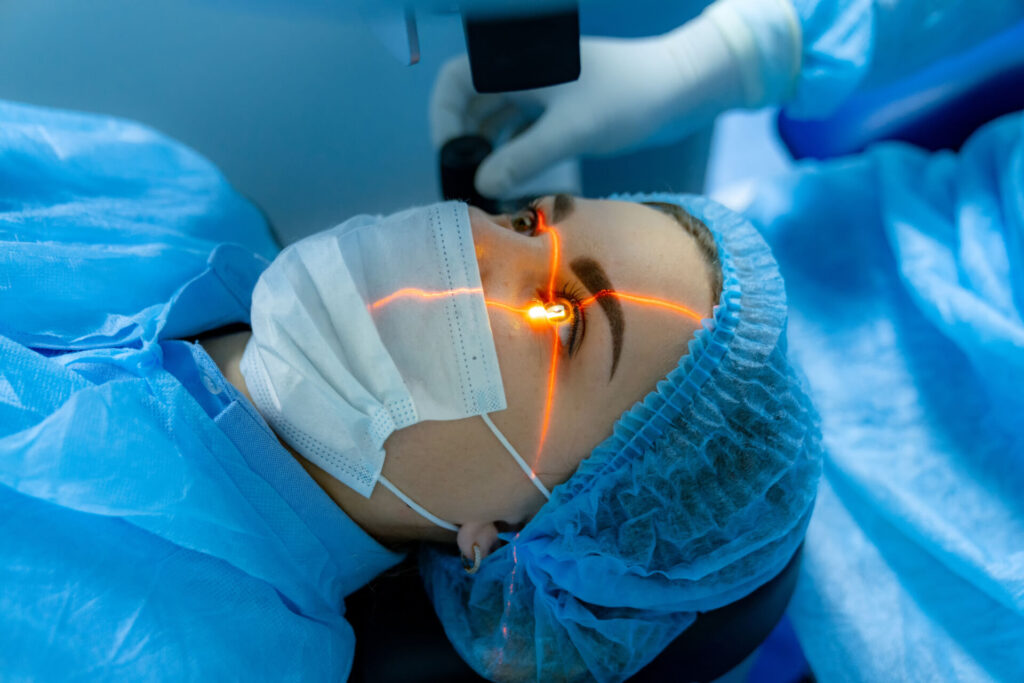PRK and LASIK are both laser eye surgeries that correct refractive errors like nearsightedness, farsightedness, and astigmatism by reshaping the cornea. The main difference lies in how the surgeon accesses the cornea—PRK removes the surface layer, while LASIK creates a flap. LASIK offers faster recovery with less discomfort, but PRK may have fewer long-term complications like dry eye. Understanding these differences can help patients decide which procedure best suits their vision needs.
Lasers have revolutionized many aspects of our daily lives. At the store, a laser scans product barcodes so we can check out faster. On the road, lasers in your car scan the road ahead and sound an alarm if someone walks out in front of you. If you call someone who doesn’t live in your part of the country, a laser transmits your conversation via a fiber optic cable for at least part of the distance.
However, one of the most significant changes that lasers can make in many people’s lives is through laser eye surgery. Since the early 1980s, eye doctors have been using lasers to perform minimally invasive procedures with precision to correct refractive errors and restore patients to clear vision without the need for glasses or contacts. There are now dozens of different eye procedures that can be carried out with a laser.
Of these dozens of eye procedures, two are easily the most commonly performed and the most well-known in the US: PRK and LASIK. Both correct nearsightedness, farsightedness, and astigmatism by reshaping the cornea, but they differ in how the surgeon gains access to the cornea.
This month, the eye doctors from your Macon eye care center are helping explain how PRK is different from LASIK and why patients may want to choose one or the other when they’re seeking vision correction.
What Are PRK and LASIK?
PRK (photorefractive keratectomy) and LASIK (laser-assisted in situ keratomileusis) were the first two common laser eye surgeries for correcting refractive errors, and in many ways, they’re very similar.
Both Can Correct Common Refractive Errors
Both PRK and LASIK are used to correct the three most common refractive errors: nearsightedness (myopia), farsightedness (hyperopia), and astigmatism.
Both Use an Excimer Laser to Reshape the Cornea
Excimer (excited dimer) lasers use high-frequency ultraviolet light to perform what’s known as “ablation” of tissue from the cornea of the eye. While commonly thought of as “burning,” ablation is actually a different process—the laser contains enough energy to target tissue being removed so that its molecules evaporate, leaving remaining tissue free of damage.
By precisely targeting the area and ablating parts of the corneal epithelium (the layer just below the surface of the cornea), surgeons can correct a patient’s refractive error(s) and reduce their dependence on corrective lenses.
How Are PRK and LASIK Different?
The primary difference between the two procedures is how the surgeon gains access to the corneal epithelium:
In a PRK procedure, the surgeon removes all of the surface tissue entirely, either by brushing or cutting it away. This top upper layer is capable of fully regenerating itself within a few days, and the regrowing tissue won’t cause any additional deformation or change in the visual acuity of the affected eye.
In a LASIK procedure, a flap is cut in the upper surface of the cornea, and that flap is pulled aside while the laser ablation of the epithelium proceeds. Once the ablation is completed, the flap is laid back across the cornea and allowed to heal.
Generally speaking, many patients will choose one procedure over another based on its recovery time, the amount of discomfort or pain that’s likely to follow the operation, and the long-term outcomes of each.

What Are the Long-Term Outcomes of PRK and LASIK?
Both procedures are fairly comparable in terms of improving patient vision. The success rate for the most common refractive errors is also pretty similar.
Where the long-term outcomes differ is in the likelihood of a future complication, and that’s where PRK’s advantages stand out. With LASIK, the flap made by the surgeon at the start of the procedure can become the nexus for a number of possible complications. The most common of these is dry eye, and LASIK patients record a high incidence of dry eye, occasionally developing into dry eye syndrome. Others include “flap complications,” an umbrella term describing what happens if the flap gets moved, folded, wrinkled, or otherwise damaged during the healing process. In these cases, corrective surgery can resolve the issue.
Ready to See Clearly Again? Visit Eyesight Associates to Learn More About How PRK Can Restore Your Vision!
With eight locations around Middle Georgia and the Golden Isles, we’re always close at hand to help you maintain clear vision! Call 478-923-5872 to learn more or make an appointment.
Recent Articles:
- 5 Reasons Why Choosing a Full-Service Eye Care Center is Better
- How Long Does Eye Strain Last?
- What Is Eye Strain and What Causes It?
